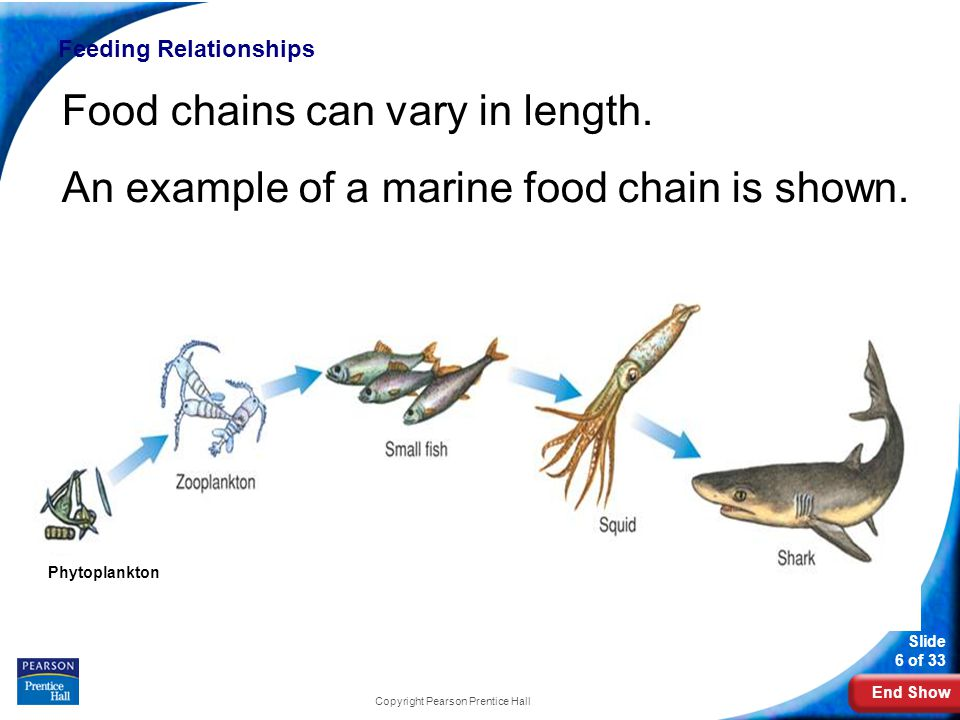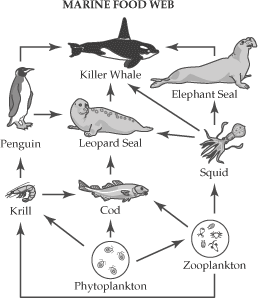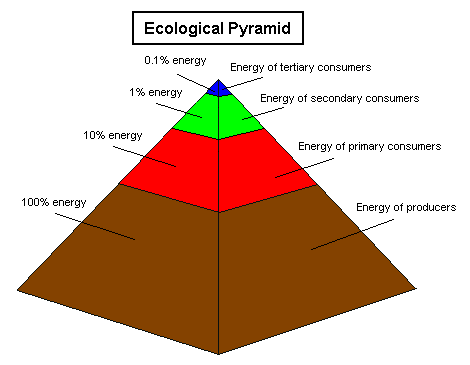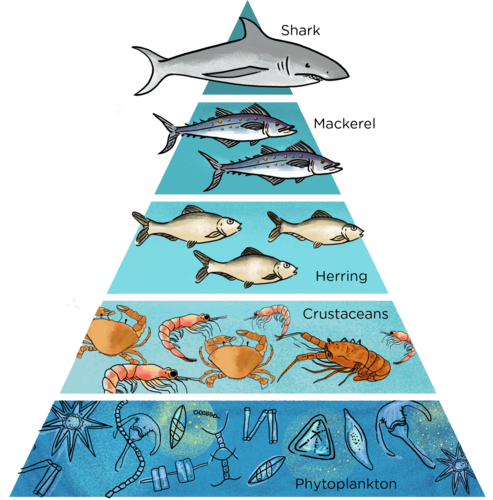Food Webs
- Autotrophs produce all the food that heterotrophs use
- Also called producers
- Without autotrophs, there would be no life on this planet
- Ex: Plants and Algae
- Organisms that do not make their own food
- Consume other organisms in order to live
- Also called consumers
- Ex: Fish, Coral, Whales
- Feed on the tissue of dead organisms (both plants and animals)
- Ex: Crayfish
- Eat ONLY plants
- Ex: Green Sea Turtles, Manatees
- Eat ONLY meat
- Ex: Sharks, Sea Stars
- Eat BOTH plants and animals
- Ex: Horseshoe Crabs, Lobsters
- Absorb any dead material and break it down into simple nutrients or fertilizers
- Ex: Bacteria and Fungi
- When a sea turtle eats the seagrass, it does not obtain all of the energy the seagrass has (much of it is not eaten)
- When a shark eats a sea turtle, it does not get all of the energy from the sea turtle (much of it is lost as heat)
- No organism EVER receives all of the energy from the organism they just ate
- Only 10% of the energy from one trophic level is transferred to the next
- This is called the 10% Law
- Energy moves from one organism to another when it is eaten
- Each step in this transfer of energy is known as a trophic level
- The main trophic levels are
- producers
- consumers (primary, secondary, tertiary)
- decomposers
- The energy flow from one trophic level to the other is known as a food chain
- A food chain is simple and direct
- It involves one organism at each trophic level
- Progression
- Primary Consumers – eat autotrophs (producers)
- Secondary Consumers – eat primary consumers
- Tertiary Consumers – eat secondary consumers
- Decomposers – bacteria and fungi that break down dead organisms and recycle the material back into the environment

- Most organisms eat more the JUST one organism
- When more organisms are involved, it is known as a FOOD WEB
- Food webs are more complex and involve lots of organisms
- Diagram arrows
- Notice the direction the arrow points 🡪
- The arrow points in the direction of the transfer of energy, NOT “what eats what”

- The total mass of the organic matter at each trophic level is called biomass
- Biomass is just another term for potential energy
- Energy that is to be eaten and used
- The transfer of energy from one level to another is very inefficient (10% Law)

- An ecological pyramid shows the relationship between consumers and producers at different trophic levels in an ecosystem
- Shows the relative amounts of energy or matter contained at each trophic level
- The pyramid shows which level has the most energy and the highest number of organisms


- A close and permanent association between organisms of different species
- Commensalism
- A relationship in which one organism benefits and the other is not affected
- Example: Barnacles on a whale
- A relationship in which both organisms benefit from each other
- Example: Sea anemone and clownfish
- A relationship in which one organism benefits and the other is harmed
- Example: Sea urchins and coral




